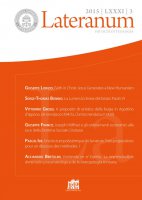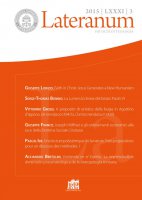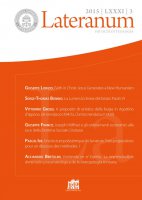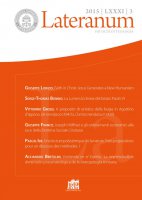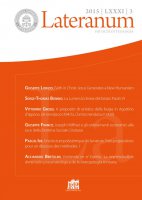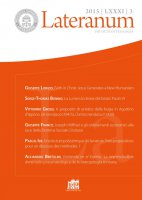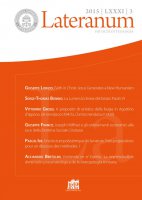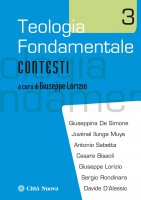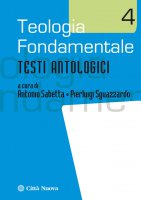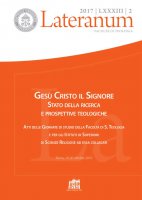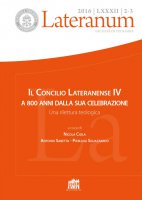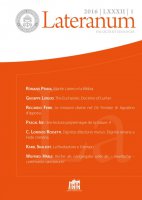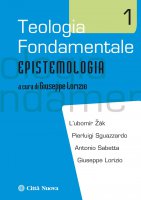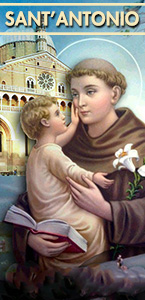Estratto
The article reiterates the address to the V Congress of the Italian Church (in Florence, November 2015). It indicates guidelines towards a new humanism that is founded on the new covenant instituted by Christ and meant to be lived and actualized in the Church and in the world. The establishment of this new covenant puts the ecclesial action of our communities in a state of continual conversion, pushing us to go beyond a pastoral ministry founded on structures, moving us towards care for persons. In particular, re-reading the Christ-event through the light of the covenant concerns: the covenant between man and nature, between man and woman, between generations, between peoples, between religions, between citizens and institutions, and between Christ and the Church.
Keywords:
Church; New Humanism: covenant; pastoral conversion; Christ-event.
Abstract
L’articolo riproduce la relazione al V Convegno della Chiesa Italiana (Firenze, novembre 2015). Esso indica alcune linee di un nuovo umanesimo che si fonda sulla nuova alleanza, realizzatasi in Cristo, che va vissuta e attualizzata nell’oggi della Chiesa e del mondo. L’attualizzazione di questa nuova alleanza, pone l’agire ecclesiale delle nostre comunità in uno stato di conversione, spinge a superare una pastorale fondata sulle strutture muovendo verso l’attenzione alle persone. In particolare l’alleanza alla cui luce rileggere l’evento Cristo concerne: l’alleanza uomo-natura, uomo-donna, l’alleanza tra le generazioni, fra popoli, fra religioni, fra cittadino e istituzioni, fra Cristo e Chiesa
Parole chiave:
Chiesa; nuovo umanesimo: alleanza; conversione pastorale; evento Cristo.
__________________________________________________________
0. Introduction
Our being “here” and “now” invites us to think. The “here” of Florence – “like a blossoming tree, which has its trunk and branches in the Piazza de’ Signori, but the roots bring forth new vitalities from the limpid and fertile valleys” (Rinuccio’s aria in Gianni Schicchi) – immerses us in a context rich with the fruits of historical humanism. We are here, not as tourists, but rather to question ourselves on behalf of our ecclesial communities about the significance of the Gospel and of history in our present day. Our purpose is to rediscover the historical roots of humanism, and even more importantly, the roots of the “new” humanism recovered by faith in Christ Jesus, which unites us without homogenizing us and challenges us without oppressing us.
We are talking about a “humanism” that risks being mistaken because it is hidden among the different forms of humanism present in the global village, just as the truth risks being confused with opinions and the Eucharist can be lost among common bread (cf. B. Pascal quoted by Fides et Ratio, 13). Each of us, every cell of the Church, is charged with the task of revealing the absolute novelty of that which is human, which is witnessed to by the Gospel and incarnated in Jesus of Nazareth. The perception of this radical and perennial newness prevents a merely humanistic reduction of the faith, a faith called to live on the frontiers and map the terrain in a daily martyria (witness), which is both personal and communal. While it is true that “the more Christian we are, the more human we are,” it is not automatically true that “the more human we are, the more Christian we are.” The act of faith and the action of grace lead us further into that dynamic which Dante calls trasumanare, or “beyond the human,” which the Florentine poet finds impossible to capture and express in words and concepts.
Faith in Christ Jesus does not simply accommodate, contemplate, and perhaps imitate what is human-historical knowledge would suffice for this; rather, faith sees and professes the human and divine in a deep personal unity, which engages us both within and beyond history.
The last and definitive Covenant is accomplished in the person of the Incarnate Word, joining God and man, the Eternal and time, and the Infinite and the finite. This (hypostatic) union, when understood by faith, generates a humanism that the famous, twentieth-century theologian Karl Rahner did not hesitate to define as “concrete” and so new that one could say it is “non-human” – not in the sense of anti-human, but beyond-the-human, or “supernatural.” It involves contemplating and living the paradox of “the concrete universal,” admirably described by that other great thinker of the last century, Hans Urs von Balthasar. To make this covenant, God became a nomad through the gift of the Son, in order to meet a nomadic people. He pitched his tent among us in the ecclesial form of a field hospital, where wounds are healed, illnesses cured, and each person encountered and redeemed. Thus, the experience of migration becomes the time and place of experiencing the presence of God, who becomes flesh and blood in solidarity with us. It is the place and time of the unique, new covenant that extends beyond the nomadism of the wandering Aramean and is made present in the different forms of the current human condition—a condition impressionably represented by Pope Francis, who began his greeting to the White House by presenting himself as the son of an immigrant (Sept. 25, 2015). God becomes nomadic to meet man in his essential poverty, devoid of masks, roles, superstructures, and trappings that threaten to obscure his profound identity. It is the condition of the wandering family of Nazareth, obliged to lay the newborn in a manger “because there was no place [oÙk Ãn aÙto‹j tÒpoj] for them in the inn” (Lk 2:7); it is the nomadism of the Son of Man, who, unlike the foxes and birds, “has nowhere to lay his head” (Mt 8:20; Lk 9:58).
[...]




